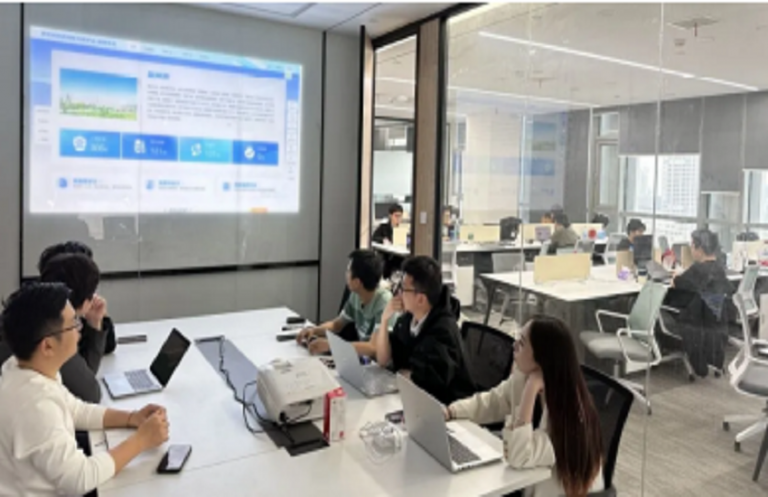
By Yu Weiliang, High-quality development of enterprises relies heavily on technology and talent. In Wuhan, capital of central China’s Hubei province, a dedicated platform has been established to bridge the gap between enterprises and technological expertise.
In a laboratory of the School of Automation, China University of Geosciences, associate professor Zhang Jingjing was working with Yan Wenlin, head of R&D with Wuhan AI Intelligent Technology Co., Ltd., to test a newly developed temperature and humidity sensor prototype. Connecting circuit boards to oscilloscopes and multimeters, they examined waveforms, and measured voltage and current.
Just three months ago, Zhang and Yan, whose offices are only two kilometers apart, had never met each other. What brought them together was the Hubei Sci-tech Innovation Supply Chain Platform (hereafter referred to as “the Platform”).
The Platform was launched in 2023, with companies proposing research topics and universities and research institutes offering responses, creating an industrial innovation ecosystem that is demand-oriented and enterprise-centered.
It provides services for users across the province, such as contract signing and supply-demand matchmaking of technology, human resources, and financing.
Zhang, engaged in computer vision research, had long entertained the idea of empowering agriculture with artificial intelligence, but had not found the proper approach yet.
Wuhan AI Intelligent Technology Co., Ltd. is a business startup committed to developing affordable sensors that can be used by aquaculture farmers. Before meeting Zhang, Yan had sought technological support from multiple agricultural universities and research institutions, only to be met with disappointment.
Yan attributed it to two reasons. “First, researchers’ focuses don’t always align with the needs of companies; second, they don’t have enough trust for small enterprises like us.”
Thanks to the Platform, enterprises can now easily find technological support just like they would shop online. “The intelligent matching model on the Platform enables ‘one-click matchmaking,’ which can ensure quick and easy connections between supply and demand. Behind every piece of effective information is a technology manager who provides comprehensive services to both enterprises and research institutions. This allows for rapid communication and problem-solving,” said Li Tianpei, general manager of Hubei Sci-tech Innovation Supply Chain Co., Ltd.
Learning about the Platform, Yan registered on it through a quick QR code scan and posted a request for creating a micro temperature and humidity sensor. Soon, Yan was recommended with multiple eligible technology suppliers.
Finally, Yan selected Zhang’s team under the recommendation of a technology manager. In just a week, Zhang devised a detailed development plan for developing the sensor, rapidly completing the prototype design and moving on to the testing phase.
How can sci-tech achievements be turned into commercial products after aligning supply and demand?
Hubei has rolled out new policies to improve the incentive mechanism by taking Wuhan East Lake High-Tech Development Zone (EDZ) as a pilot, in an effort to boost collaborations on the Platform.
An annual special fund of 200 million yuan ($27.85 million) has been set up to support the phased transformation and commercialization of sci-tech achievements. It also supports collaborative research among enterprises, universities, and research institutions, with the government providing enterprises with one-third of the actual investment. The maximum financial support for a single project is 1 million yuan.
In February this year, Wuhan Ganwei Technology Co., Ltd. posted on the Platform a demand for a highly integrated industrial-grade infrared optical gas sensor. Experts from the Optics Valley Laboratory (Wuhan National Laboratory for Optoelectronics) located in EDZ, also known as Optics Valley of China, soon took up the task. “Initially, our projected budget was 1 million yuan, but the cost proposed by the experts was slightly higher,” said Zhang Junlong, the company’s general manager.
Thanks to a project it joined under the encouragement of EDZ, the company became eligible for a 1-million-yuan incentive fund, which allowed Zhang Junlong to focus on the collaboration with the laboratory.
As of now, the Platform has attracted over 34,000 active companies, which have released more than 16,000 demands. Over 4,500 collaborations have been facilitated.










